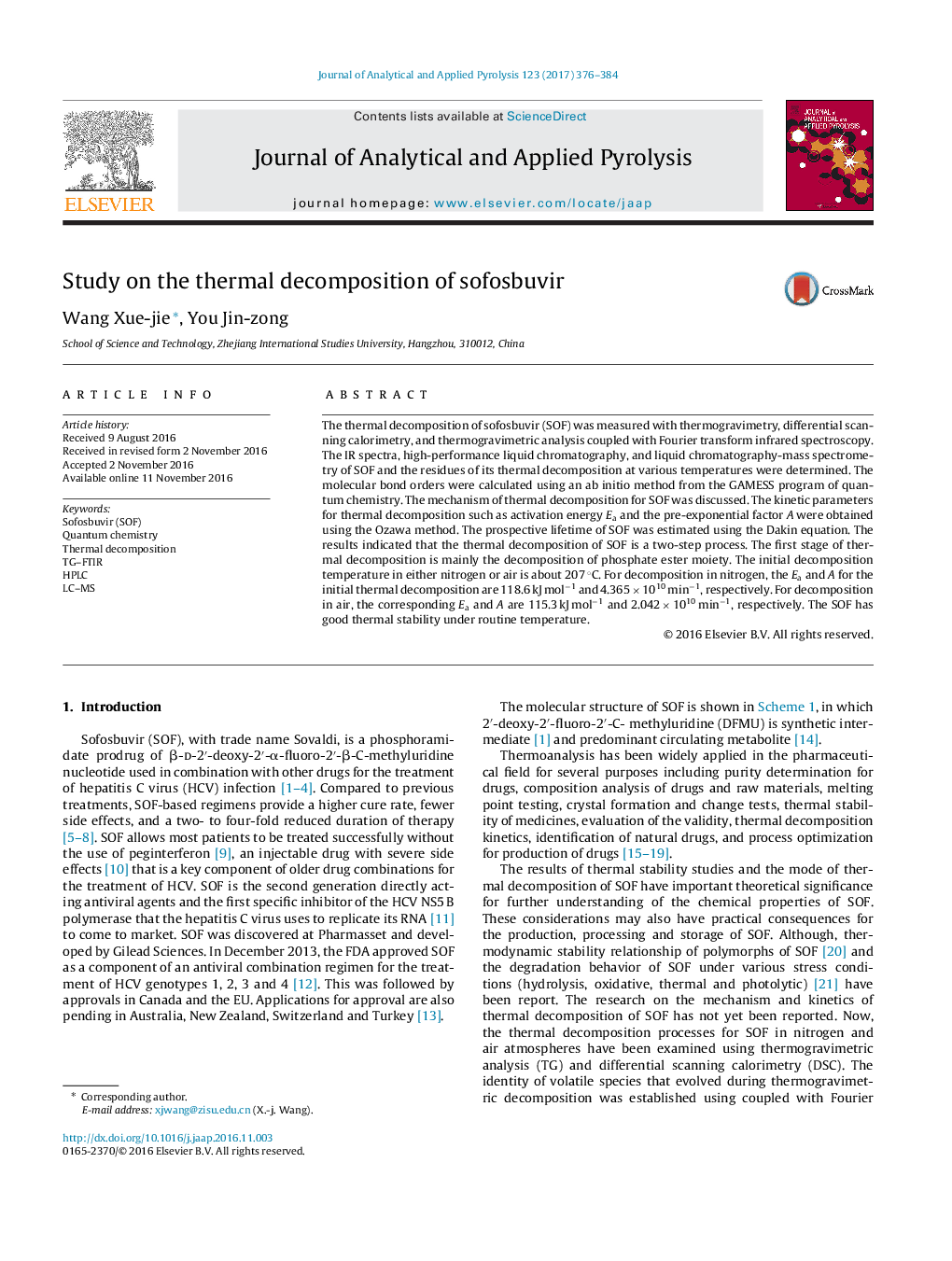| Article ID | Journal | Published Year | Pages | File Type |
|---|---|---|---|---|
| 5134556 | Journal of Analytical and Applied Pyrolysis | 2017 | 9 Pages |
â¢The thermal decomposition of sofosbuvir (SOF) was studied with various instruments and methods.â¢The mechanism of the thermal decomposition of SOF has been proposed.â¢The kinetic parameters of thermal decomposition, such as Ea and A, were obtained.â¢The prospective lifetime of SOF was speculated.
The thermal decomposition of sofosbuvir (SOF) was measured with thermogravimetry, differential scanning calorimetry, and thermogravimetric analysis coupled with Fourier transform infrared spectroscopy. The IR spectra, high-performance liquid chromatography, and liquid chromatography-mass spectrometry of SOF and the residues of its thermal decomposition at various temperatures were determined. The molecular bond orders were calculated using an ab initio method from the GAMESS program of quantum chemistry. The mechanism of thermal decomposition for SOF was discussed. The kinetic parameters for thermal decomposition such as activation energy Ea and the pre-exponential factor A were obtained using the Ozawa method. The prospective lifetime of SOF was estimated using the Dakin equation. The results indicated that the thermal decomposition of SOF is a two-step process. The first stage of thermal decomposition is mainly the decomposition of phosphate ester moiety. The initial decomposition temperature in either nitrogen or air is about 207 °C. For decomposition in nitrogen, the Ea and A for the initial thermal decomposition are 118.6 kJ molâ1 and 4.365 Ã 1010 minâ1, respectively. For decomposition in air, the corresponding Ea and A are 115.3 kJ molâ1 and 2.042 Ã 1010 minâ1, respectively. The SOF has good thermal stability under routine temperature.
